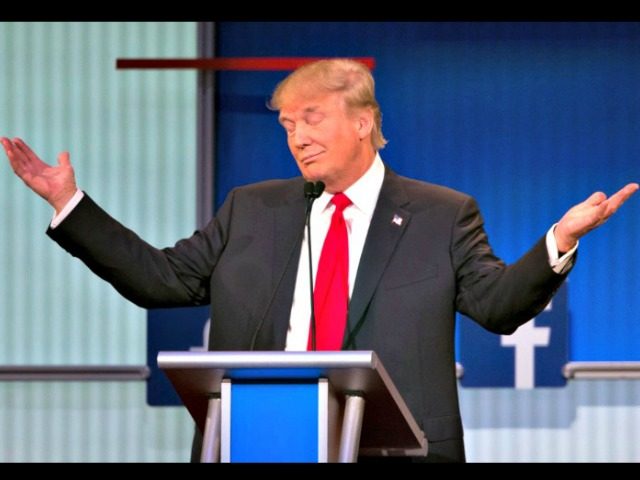Donald Trump’s campaign for President ended the primary contest with just $2.4 million in the bank. The unconventional nature of Trump’s run for the White House is perhaps best reflected in its fundraising reports. Throughout the entire primary, Trump raised $58.9 million. This amount includes $43 million the candidate loaned to his campaign.
The numbers also suggest, though, that Trump begins the general election at a distinct financial disadvantage to presumptive Democrat nominee Hillary Clinton, who had more than $30 million in the bank at the end of April.
The figures comes from FEC filings covering campaign activity through April 30th. Fundraising figures for May won’t be available until the end of June. With the Republican primary effectively ended after the Indiana primary on May 3rd, the figures essentially represent the end of the primary contest for Trump.
In April, which turned out to be the climactic month of the Republican contest, Trump raised just over $9 million for the month, which includes a $7 million loan from the candidate. Individual donors contributed just $1.7 million for the month, with $1.2 million coming from small-dollar donors.
The amount from small-dollar donors was down considerably from the previous two months. In March, Trump raised just over $2 million from small-dollar donors, while in February, Trump raised $1.5 million.
Obviously, this drop in donations didn’t negatively impact Trump’s primary campaign. One would normally expect, however, that these kinds of donations would increase as the campaign intensified and the candidate neared victory.
Hillary Clinton, by contrast, has raised around $6 million a month in the last three months from small-dollar donors. Throughout her entire primary campaign, Hillary has raised over $211 million, $40 million of which came from small-dollar donors. Trump has raised just $10 million from small-dollar donors throughout his primary.
It is important to note, again, that all of these figures only include activity through April 30th. That was six weeks ago, during which Trump unofficially became the GOP nominee and Hillary continued to wage an aggressive campaign against Vermont socialist Sen. Bernie Sanders. The Trump campaign has also proved very effective at running a very successful, low-cost operation. That said, Trump has started his general election campaign at a significant funding disadvantage.
Hillary Clinton began May with almost 15x the cash on hand as Trump. The situation for Trump is especially perilous because of the weak finances of the Republican National Committee. The RNC ended April with just $17 million in the bank.
In April 2012, the RNC had $35 million in the bank. In April 2008, the Republicans had more than $40 million cash on hand. The Hillary Clinton campaign, by itself, had more cash in the bank than Trump and the Republican party combined at the end of April.
Last week, Trump distanced himself from earlier plans to raise $1 billion for the general election. Some anonymous Republican fundraisers have floated $300 million as a realistic total to raise for the November contest.
Even that total might be difficult, though, given the campaign’s current weakness in building a fundraising network. Small dollar donors are prized by campaigns because they represent a pool of supporters one can raise additional funds from as the campaign unfolds. Trump didn’t need a lot of these donations to get through the primary, though, so he is starting from scratch, in many respects.
The Trump campaign has proved, of course, that dollars raised don’t automatically translate to success. He has been able to attract millions of dollars worth of exposure through earned media, rather than paid advertising. That said, money is important, especially in a general election contest.
Primaries draw from a small subset of voters who are generally much more politically engaged than regular voters. They follow the news and campaign activities much more closely than general election voters. Engaging these voters, many of whom are only marginally attached to current events or politics, can be very expensive.
A candidate can be outspent in a general election contest, but you can’t face a tidal wave of outspending. The next fundraising report will be very critical in determining the landscape of the November contest.

COMMENTS
Please let us know if you're having issues with commenting.